Summary
- The Thypoch Eureka 50mm lens comes in both brass and aluminum, each with its own unique advantages.
- The brass model is sturdier and has a high-quality feel, whereas the aluminum model is lighter and less expensive.
- Perth was a great place to test the lenses because of its diverse landscapes and lighting conditions.
- Carrying the lighter aluminum model can make your photography experience more enjoyable, especially on long trips.
- Whether you choose brass or aluminum will depend on what you value most: weight, cost, and looks.
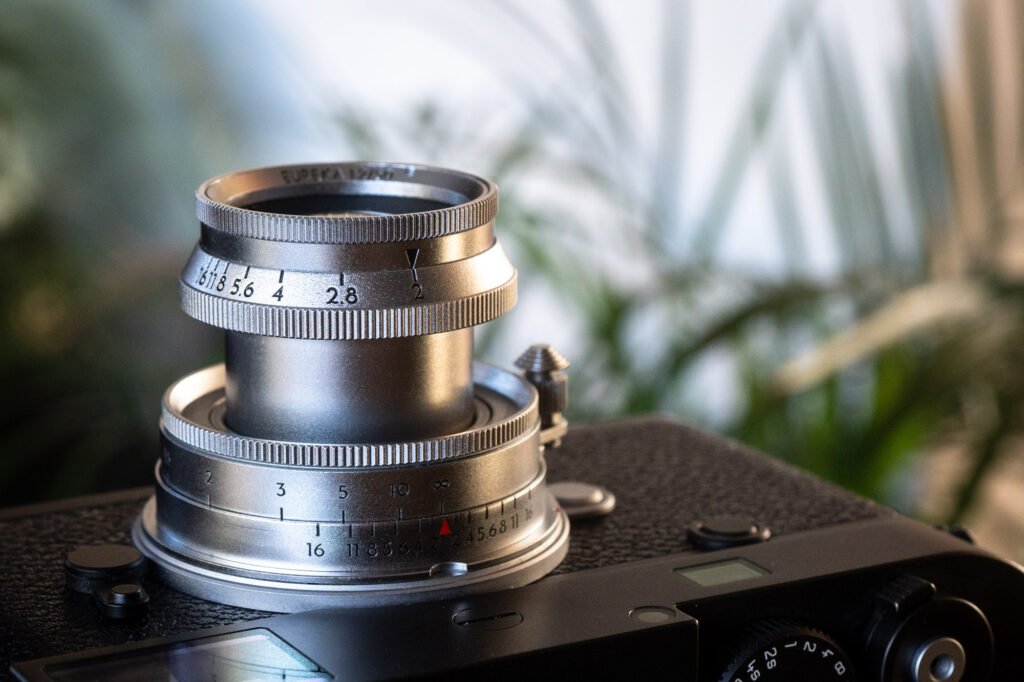
Introduction
In my initial review, I received questions about whether to go for the brass or aluminium version of the lens. Many people were curious about how different the finish is between the two, as well as the feel of them and which one is better value for money. Some were wondering if it is worth paying the extra for the brass version.
I will address these questions by sharing some of the images I took throughout my trip with the lens, including street photography and everyday photos.
If you are not familiar with the Thypoch Eureka lens, then go ahead and click this link below to read more…
Brass versus Aluminium
The finish on the brass version does have a slightly darker look to it. It’s a little bit more metallic. The aluminum version has a bit of a lighter appearance in terms of color, but to me, that’s pretty insignificant. Sure, I do think the brass version looks a little bit better in terms of the finish, but you’d be hard-pressed to tell the difference.
Many photographers are drawn to the brass version because it has a traditional, high-quality feel. Its weight and durability give it a substantial presence that many photographers find attractive. The aluminum version, on the other hand, is perfect for those who value portability and cost-effectiveness without compromising on performance.
Get Thypoch Eureka 50mm Lens at:
|
Feature |
Brass Version |
Aluminum Version |
|---|---|---|
|
Weight |
Heavier (0.5lb / 230g) |
Lighter (0.3lb / 120g) |
|
Durability |
Very Durable |
Moderately Durable |
|
Cost |
Higher |
Lower |
|
Aesthetic |
Classic |
Modern |
|
Lens and Specifications |
The same |
The same |
|
Color |
Darker |
Lighter |
Appearance and Discrepancies
Let’s dissect the physical discrepancies between the two materials.
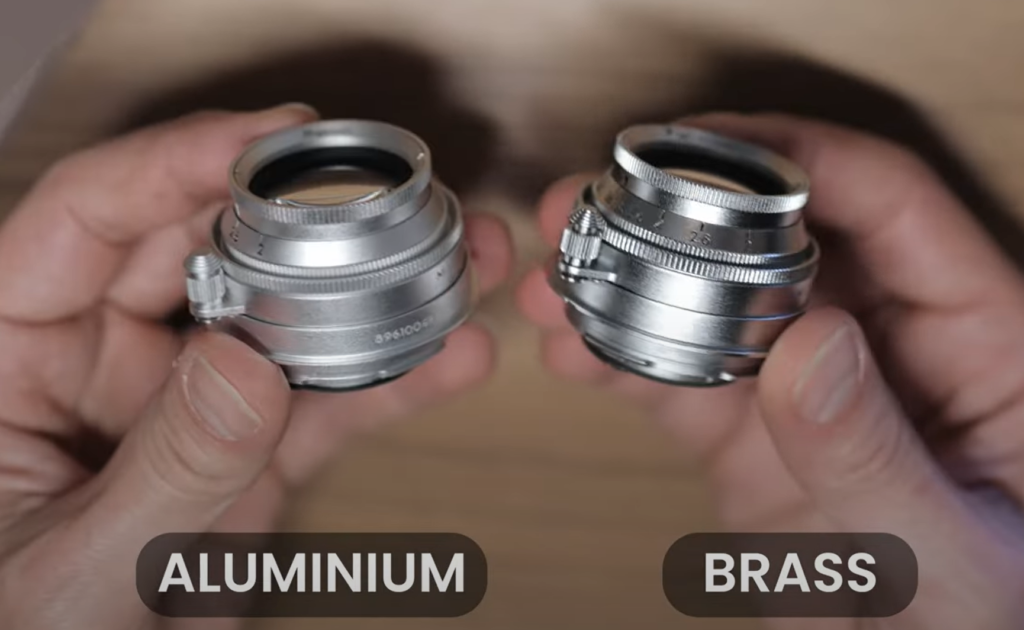
Aluminum version is much lighter. It’s still solid and smooth, which is the important thing. But the big thing you’ll notice is the weight. You can feel that it’s made from brass, so the weight is actually significantly different between the two.
Despite being lighter, the aluminum lens still has the same optical quality as the brass lens. It’s the same glass, same little features, you’re going to get the same images.
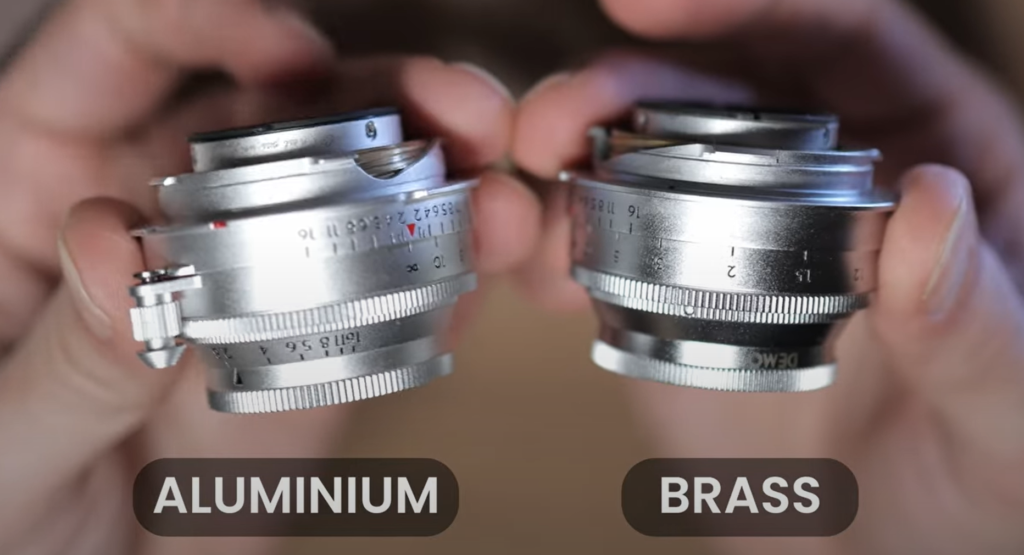
How Long Each Material Lasts
Longevity is an important factor to consider when buying a lens. The brass version is known for its strength and ability to last a long time. Its sturdy construction can handle more abuse, making it a good choice for photographers who are hard on their equipment.
Meanwhile, despite being less dense than brass, aluminum still provides a decent level of durability. It’s also more resistant to corrosion, which is a bonus if you often shoot in humid or coastal conditions.
Should You Get the Brass Version?
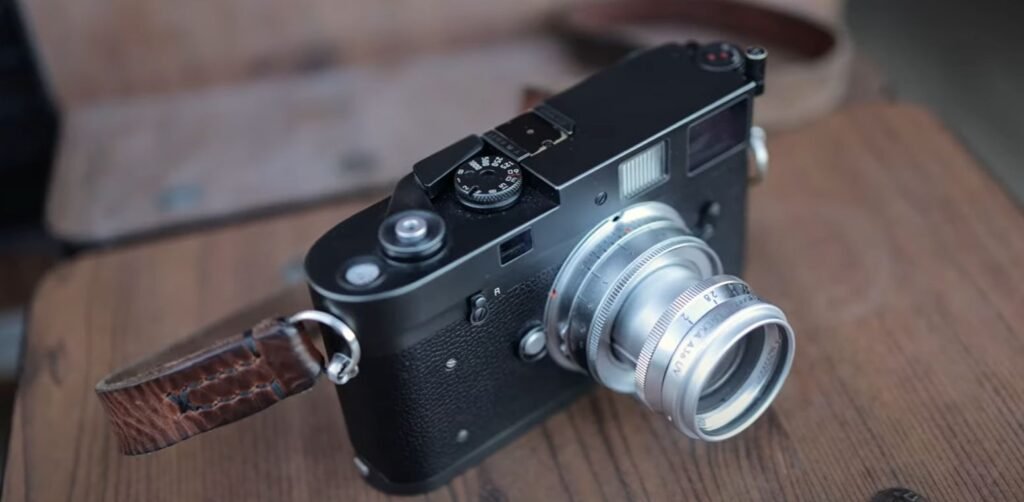
Choosing the brass version means considering a few things. It’s usually pricier, but its top-notch construction and long-lastingness could make it worth the higher price for some photographers.
- If you like the look of a classic lens and don’t mind the extra weight, the brass version could be a good choice for you.
- If you’re looking for something more portable and budget-friendly, the aluminum version is a great option that doesn’t sacrifice performance.
- Think about how you plan to use the lens and what features are most important to you before you make your decision.
Overall though, is it worth paying extra for the brass? I think for most people, it’s probably not worth paying extra for the brass. If you are a collector, if you want to own this lens forever and you think that you just like having that premium look and feel and just know that maybe it will last longer, maybe it’ll be more resistant, then I would suggest that if you just want a good value lens, a good all-rounder, just go for the aluminum one.
Cost
Get Thypoch Eureka 50mm Lens at:
The brass model of the Thypoch Eureka 50mm lens is generally priced higher due to its superior build quality and longevity. The aluminum model, on the other hand, is more budget-friendly and caters to a larger audience of photographers, especially those who value cost efficiency.
Remember to look out for any special deals or discounts that might make the brass version more affordable. Also, think about the long-term value each version provides as this could affect how happy you are with your purchase in the long run.
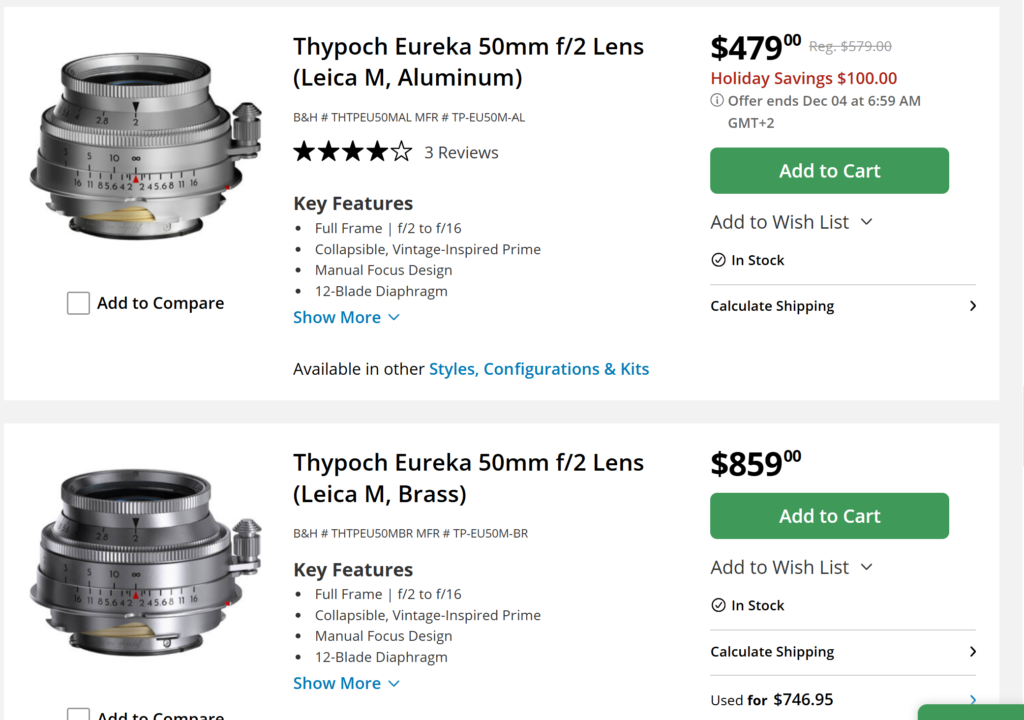
Conclusion
Ultimately, the Thypoch Eureka 50mm lens provides photographers with a flexible and high-quality instrument, regardless of whether they opt for the brass or aluminium model. By taking into account your individual requirements and tastes, you can make a knowledgeable choice and improve your photography experience with this outstanding lens.




Leave a Reply